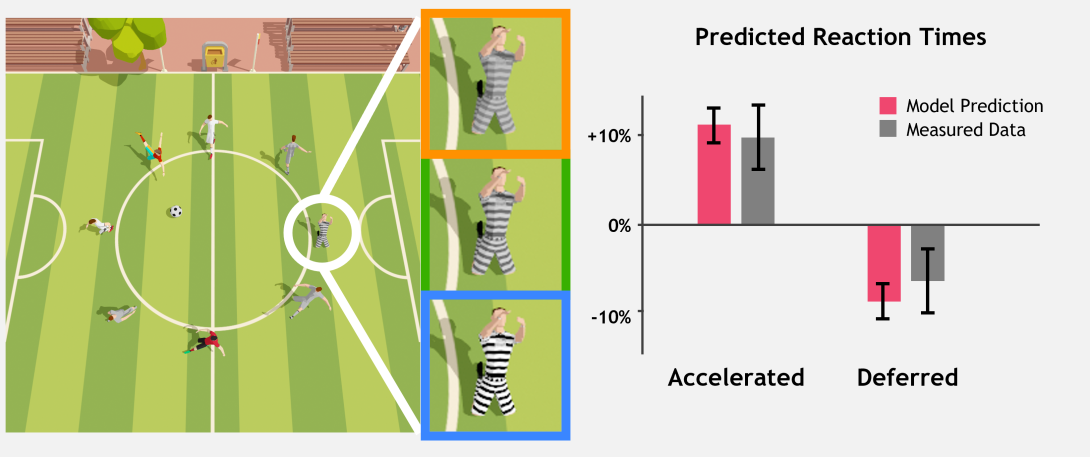Image Features Influence Reaction Time: A Learned Probabilistic Perceptual Model for Saccade Latency

We aim to ask and answer an essential question “how quickly do we react after observing a displayed visual target?” To this end, we present psychophysical studies that characterize the remarkable disconnect between human saccadic behaviors and spatial visual acuity. Building on the results of our studies, we develop a perceptual model to predict temporal gaze behavior, particularly saccadic latency, as a function of the statistics of a displayed image. Specifically, we implement a neurologically-inspired probabilistic model that mimics the accumulation of confidence that leads to a perceptual decision. We validate our model with a series of objective measurements and user studies using an eye-tracked VR display. The results demonstrate that our model prediction is in statistical alignment with real-world human behavior. Further, we establish that many sub-threshold image modifications commonly introduced in graphics pipelines may significantly alter human reaction timing, even if the differences are visually undetectable. Finally, we show that our model can serve as a metric to predict and alter reaction latency of users in interactive computer graphics applications, thus may improve gaze-contingent rendering, design of virtual experiences, and player performance in e-sports. We illustrate this with two examples: estimating competition fairness in a video game with two different team colors, and tuning display viewing distance to minimize player reaction time.
Publication Date
Research Area
External Links
Uploaded Files
Award
Copyright
© 2022 Association for Computing Machinery.
This is the author’s version of the work. It is posted here for your personal use. Not for redistribution. The definitive Version of Record was published in ACM Transactions on Graphics, https://doi.org/10.1145/3528223.3530055.
